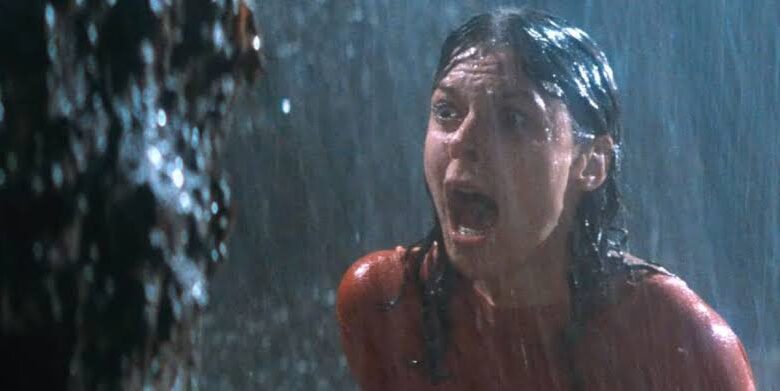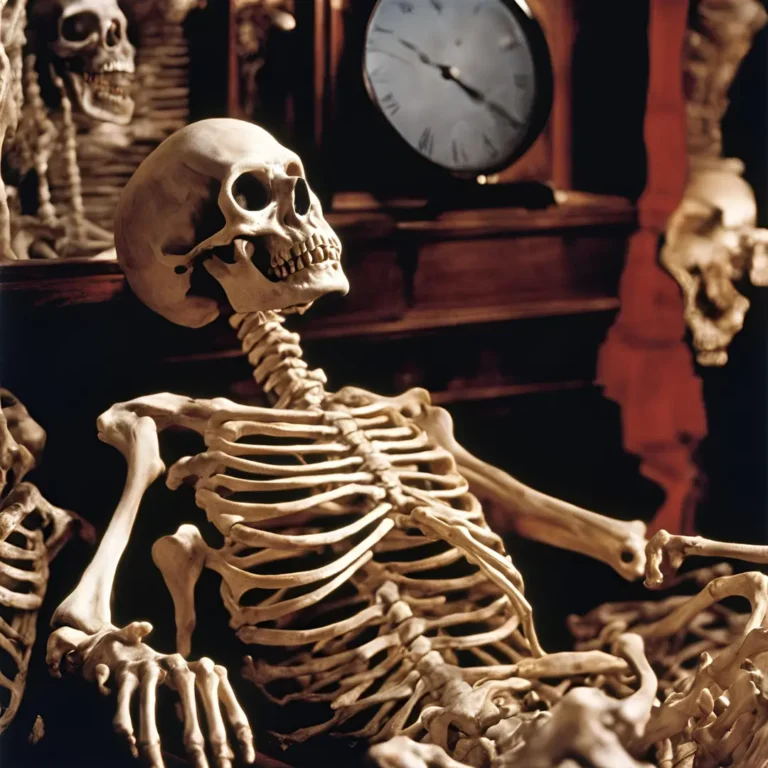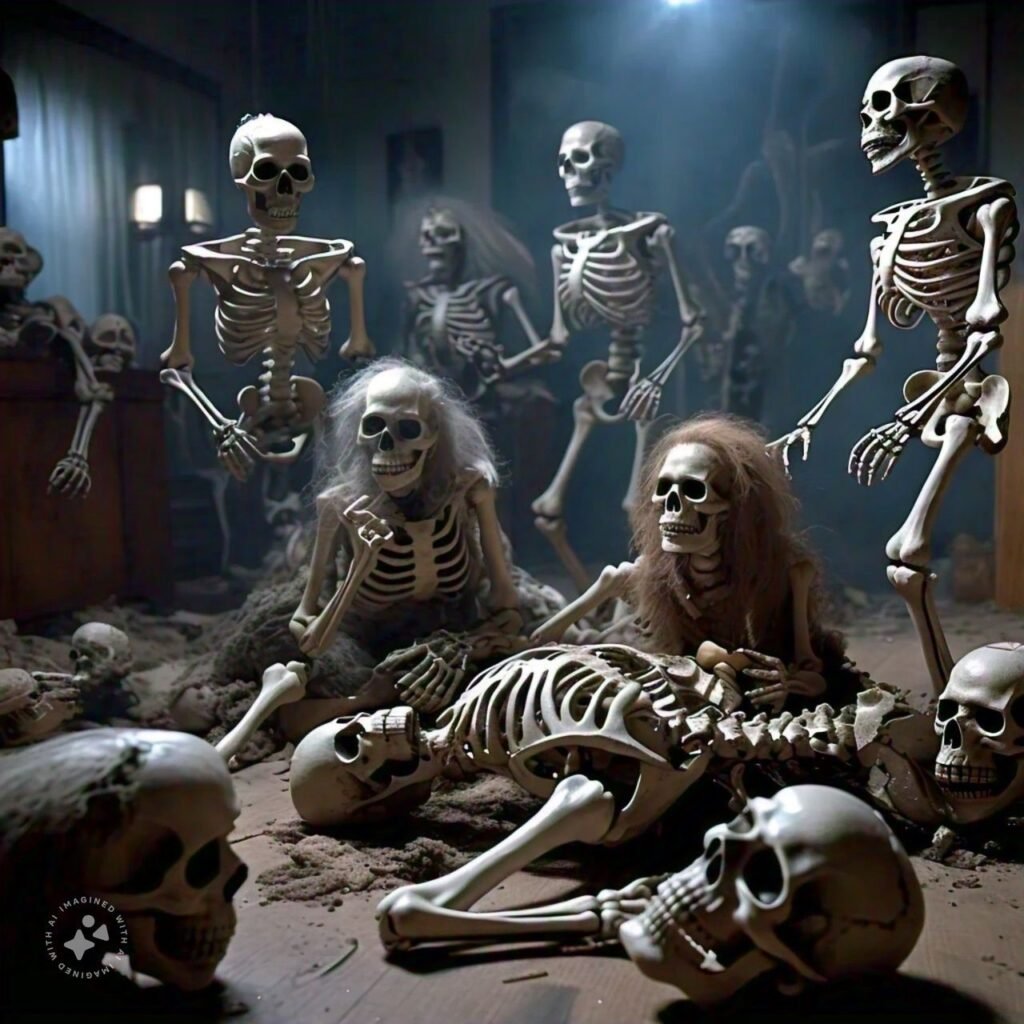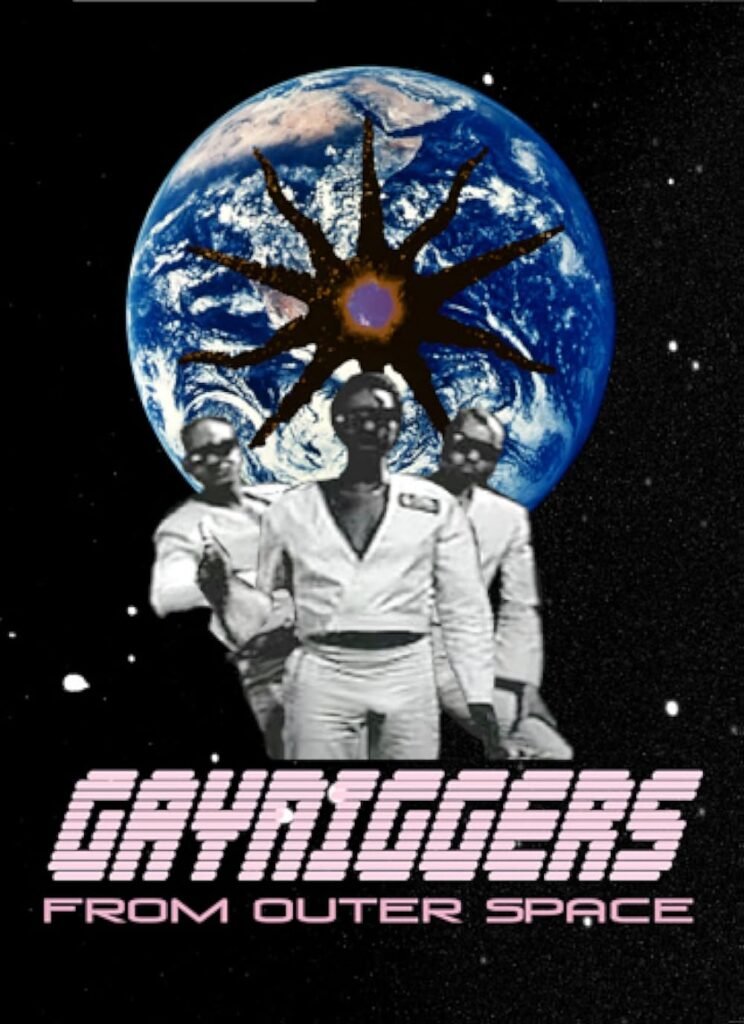Introduction to the Controversy Surrounding the Movie
the 1982 movie poltergeist used real skeletons as – tymoff: The 1982 movie “Poltergeist” is a beloved classic in the horror genre, but it harbors a dark secret that continues to haunt audiences. From its terrifying scenes of supernatural chaos to the unforgettable tagline “They’re here,
this film has left an indelible mark on pop culture. However, beneath its chilling exterior lies a shocking revelation: real skeletons were allegedly used during filming. This bizarre twist has sparked intense debate and fueled urban legends over the decades. As we dive into this controversy, we’ll explore the evidence supporting these claims and examine their impact on those involved in creating one of cinema’s most iconic ghost stories. Buckle up; things are about to get eerie!
Evidence Supporting the Use of Real Skeletons

Many rumors swirl around the production of “Poltergeist,” particularly regarding its skeletons. Several crew members have come forward with shocking claims that real human remains were used during filming.
One compelling piece of evidence comes from a statement made by special effects artist Craig Reardon. He revealed in interviews that authentic skeletal remains were indeed sourced for certain scenes, citing cost issues as a driving factor behind this decision.
Additionally, actress JoBeth Williams, who played Diane Freeling, has recounted her discomfort while filming pivotal scenes involving the skeletons. Her candid reflections add weight to the assertion that these were not mere props but genuine human bones.
These revelations have fueled speculation and controversy among fans and critics alike. The unsettling notion raises questions about how far filmmakers might go in pursuit of realism.
The Origin of the Skeletons Used in the Film

The skeletons featured in the 1982 movie Poltergeist have a chilling backstory. They were reportedly sourced from an academic supply company that specialized in human remains for educational purposes.
While initially intended to be props, their use stirred significant debate. The filmmakers believed using real bones added authenticity to certain scenes, especially those involving supernatural elements.
However, this decision raised eyebrows within the industry and among audiences alike. Many wondered about the origins of these skeletons and whether they had been ethically procured.
The choice to include genuine remains was controversial, prompting questions about respect for the deceased and their families. It blurred ethical lines that many thought should remain firmly established in filmmaking practices, making it a topic of intense discussion decades later.
Impact on Cast and Crew Members

The impact of using real skeletons in “Poltergeist” rippled through the cast and crew. Many recalled a sense of unease on set, sparked by the knowledge that they were surrounded by authentic human remains.
For some actors, it felt surreal to engage with props that had once belonged to living people. This blurred line between fiction and reality left an emotional mark on them.
Heather O’Rourke, who played Carol Anne, later experienced health issues which fans speculated could be linked to the eerie aura surrounding the film’s production. Her untimely death only fueled rumors about curses tied to the movie.
Crew members also reported feeling discomfort during filming scenes involving these skeletons. The haunting atmosphere lingered long after shooting concluded, raising questions about their professional choices versus ethical considerations in filmmaking.
These experiences shaped not just individual perspectives but also collective memories of working on such a controversial project.
Public Reaction and Criticism
Upon the release of Poltergeist, public reaction was a whirlwind. Audiences were captivated by its supernatural thrills but quickly turned their attention to the shocking revelation about real skeletons.
Critics expressed outrage over ethical standards in filmmaking. Many felt that using human remains crossed a line, stirring debates about respect for the deceased. This controversy overshadowed some of the movie’s cinematic achievements.
Fans also shared mixed feelings. Some believed it added authenticity to horror, enhancing their viewing experience. Others found it unsettling and disrespectful.
Media outlets were quick to pick up on this story, fueling discussions across various platforms. The backlash led many viewers to reconsider what they valued in horror films and how far filmmakers should go for realism.
In retrospect, these reactions illustrated a broader conversation about morality in entertainment that continues today.
Ethical Implications of Using Real Human Remains in Film
The use of real human remains in film raises significant ethical concerns. It challenges our understanding of respect for the dead and their families. When filmmakers opt for authenticity over sensitivity, they tread a fine line.
Audiences may appreciate realism, but at what cost? The decision to incorporate actual skeletons can evoke discomfort and moral outrage. It forces society to confront how we value life—and death—in entertainment.
Moreover, it can spark debates about consent. Were these remains obtained ethically? Did the deceased have any say in being part of a cinematic experience?
These questions linger long after the credits roll. They provoke thought about accountability within the industry and its responsibility towards history and humanity itself. Such practices might haunt not just viewers but also those involved in creating these films—impacting their mental well-being as they grapple with such heavy themes intertwined with art.
the 1982 movie poltergeist used real skeletons as – tymoff
The 1982 film “Poltergeist” has gained notoriety for its chilling storyline and haunting visuals. However, it’s the revelation about real skeletons that truly stirred the pot. This shocking detail adds a layer of complexity to its legacy.
Behind the scenes, filmmakers sought authenticity in their horror. Reports suggest they used actual human remains during certain filming sequences, particularly in those iconic pool scenes. Such choices were not just bold; they raised eyebrows across Hollywood.
Cast members have shared mixed feelings about this decision. Some expressed unease while others remained focused on creating a memorable cinematic experience. The ethical ramifications are hard to ignore though—using human remains certainly crosses boundaries for many viewers.
This choice sparked debates within the industry regarding respect for human life versus artistic expression. It forced filmmakers to reconsider how they approach sensitive subjects moving forward, highlighting an essential evolution in filmmaking practices.
Changes in Industry Standards After Poltergeist’s Release
The release of the 1982 movie “Poltergeist” sparked significant shifts in Hollywood practices. Prior to this film, the use of real human remains was not as closely regulated. However, the controversy surrounding its skeletons pushed the industry to reevaluate ethical standards.
Filmmakers began implementing stricter guidelines when it came to props and special effects. Many studios adopted policies prohibiting the use of actual human remains without explicit consent from relevant authorities or families.
This shift also influenced how films approached realism. Creators found inventive ways to replicate lifelike features using advanced materials instead of relying on controversial methods.
As a result, audiences benefited from more responsible filmmaking that respects historical sensitivities while still delivering engaging stories. The impact of “Poltergeist” is evident today, shaping how filmmakers balance artistic expression with ethical considerations in storytelling.
Conclusion: Lessons Learned from the Poltergeist Controversy
The controversy surrounding the 1982 movie Poltergeist serves as a powerful reminder of the ethical considerations in filmmaking. Using real human remains raised serious questions about respect for life and dignity.
This incident has prompted filmmakers to reassess their practices. Greater transparency and adherence to strict industry standards have become paramount.
The lessons learned extend beyond just props and production choices. They highlight the importance of informed consent, even in creative endeavors.
As audiences become more aware, they demand accountability from creators. The film industry must continue evolving to meet these expectations while fostering an atmosphere of respect.
Poltergeist’s legacy endures not only through its haunting story but also through its impact on future productions that choose sensitivity over sensationalism. This dialogue is crucial for ensuring that art does not come at the expense of humanity.
FAQs the 1982 movie poltergeist used real skeletons as – tymoff
The 1982 movie Poltergeist has etched itself into the annals of horror history, with its unsettling themes and iconic imagery. However, the whispering rumors about real skeletons used in its production have added an eerie layer to its legacy. Let’s delve into some frequently asked questions regarding this controversial topic.
Was it true that real human skeletons were used in Poltergeist?
Yes, reports indicate that actual human skeletons were incorporated in certain scenes due to cost issues associated with creating realistic props.
Why did they use real skeletons instead of replicas?
At the time, obtaining high-quality replica skeletons was expensive. The filmmakers opted for genuine remains as a practical solution during production.
How did cast members react to using real bones?
Many actors expressed discomfort upon learning about the use of real remains. Experiences varied widely; some felt unease while others remained focused on their performances.
Did this controversy affect the film’s reception?
While Poltergeist was commercially successful and received positive reviews, knowledge of using actual human remains stirred significant public debate and criticism post-release.
What ethical concerns arise from using human remains in films?
Using authentic skeletal remains raises numerous moral dilemmas. It touches on respect for the deceased and their families, alongside broader discussions around consent and exploitation within filmmaking practices.
Has industry standards changed since then?
Indeed! Following controversies like those surrounding Poltergeist, more stringent regulations emerged regarding prop usage—especially when it pertains to human anatomy or potential sensitivities involved with such materials.
When discussing cinematic history or horror classics like Poltergeist, it’s essential to consider both artistic decisions and ethical considerations behind them. These elements shape not only how we perceive these works but also influence future creations within the industry.




Pingback: how i sleep at night knowing l'm failing all my cl - tymoff